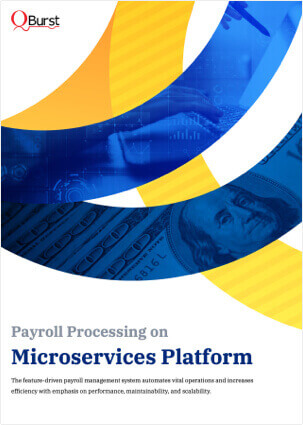Share your requirements and we'll get back to you with how we can help.
Thank you for submitting your request.
We will get back to you shortly.
Payroll Processing on Microservices
Client
Based in the U.S., our client is a global professional services company offering domain expertise in technologies that promote customer engagement. With over 65,000 employees and a presence in 25 countries, the client offers expertise in industries such as financial services, healthcare, pharmaceutical, technology, consumer electronics, retail, automotive, and tourism.
Industry
Professional Services
Overview
The highly configurable payroll processing system developed with microservices CQRS-ES architecture, provides built-in audit trail, security, logging, scalability, reliability, high availability, and upgradability at component level. The services were Dockerized for easy and hassle-free deployment. The platform significantly reduced time taken for computing and report generation.

